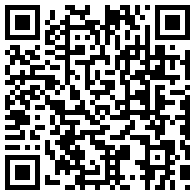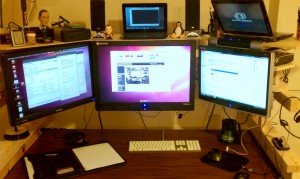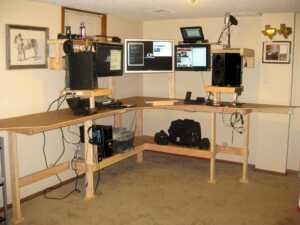
QR codes must be scanned with devices
Hello and welcome to the AuctioneerTech Auction Podcast. Today is Tuesday, 24 May, 2011. My name is Aaron Traffas, and today we’re going to talk about QR codes and Microsoft Tags – the little squares of gobbledygook that, when scanned, take you to a website or display text on your device. We’ll talk about when to use them and, more likely, when not to use them.
There has been a lot of buzz over the last couple of years, mostly from the tech and marketing industries, around the QR code and its slightly less ugly cousin, the Microsoft Tag. Last month, Google ended it’s QR code initiative for Places, opting instead to focus on near field communications. It was an exciting announcement for me, as I feel that it’ll likely start to decrease the number of QR codes that clutter the world around me. Here’s why this fad is over-hyped and why you shouldn’t use QR codes and Microsoft Tags for marketing.
Convenience
How often do you find yourself using QR codes? Sure, I’ve done it once or twice, but just to see if it worked and how easy it was. The result of my test was that it indeed works, but it’s a headache. Indeed, just now, it took me over a minute to test the Microsoft Tag used later in this post. The argument in favor of the codes is that they make it easier for users with QR code-reading devices to get to your website. However, the logic falls over when you think about someone viewing the marketing who doesn’t have such a device or, more likely, isn’t going to have the time to stop, take out a device, spend the 15 seconds or more to find and load the app, get a focus on the image, and use it to spin the wheel to see where he will be taken. It’s rare that I see a QR code that specifies the destination. In this regard, it’s kind of like sending HTML email – the user sees a bunch of junk you’ve presented him but lacks the incentive to click “show as HTML” because he’s unsure of the content or simply doesn’t care enough to suit up and participate in your game.
Branding
I’ve written about branding before, and it was the subject of episode 21 of the AuctioneerTech Auction Podcast. The most important branding your company has is your domain name. The call to action on modern auction marketing isn’t come to the auction like it was in the 1990s and before. The call to action today is come to our website. QR codes don’t convey your brand. They don’t help drill an image of your website’s URL into the mind of the viewer. I’ve seen vehicles with company magnets with nothing but a QR code. Let’s just say I wasn’t encouraged to take out my phone.
Real estate
No, not real property – real estate is jargon for the amount of area an element consumes on a screen, a web page, or marketing materials. QR codes take up a fair amount of real estate that would be much better used as white space or filled with whatever you’re trying to market – like your website.

Image by hawaii via Flickr
Aesthetics
QR codes are ugly. While the Microsoft Tag is certainly prettier and there are ways to make QR codes more attractive, you’re still dealing with the skinniest kid at fat camp. After making them beautiful, you’ve still got a box, taking up space, with a bunch of gobbledygook in the middle of it that does nothing to convey your brand.
Why are QR codes so popular? The press has over-hyped the importance. Like the possibility of using social media for business, most small business owners are jumping aboard this bandwagon without regard for the appropriateness of the medium. They’re trusting that this new-fangled thing will transform their bottom lines. There is a similar parallel between the social media fad and the QR code fad. Businesses are spending a ton of money to build these tools at the expense of much more important aspects of their branding. Businesses are adding their Facebook vanity URLs – sometimes above their websites – to marketing. I’ve written before about how much more important your website is than social media. Likewise, conveying your website – hopefully an easy-to-remember and short .com address – is the most important thing you can do in your marketing materials, certainly much more important than taking up space with a QR code that few people will use anyway.
Another reason QR codes are sometimes used is for deep linking. Like a lazy web designer uses a sitemap to fix poor navigation, some QR codes take you deep within a site to a specific page instead of to the home page of the site. It’s possible that this is an appropriate use for QR codes, and I’ll address that possibility in a moment, but most of the time this use isn’t as valuable as other approaches to getting a viewer to a specific location. If you’re trying to take the viewer to a specific page on your website, the most appropriate way is to make the page short and memorable. If you’re doing a charity auction for the Boys and Girls Foundation and your website is abcauction.com, rather than using a QR code that doesn’t specify a destination and, as such, offers no incentive to remember a domain or specific page, use the space to advertise abcauction.com/boysandgirls – it’s easy to read, easy to remember, and I believe it will generate a much more valuable response.
Is there a time when QR codes are appropriately used? QR codes are utilitarian tools, not marketing methods, and I believe that we auctioneers can find an appropriate home for QR codes or Microsoft Tags on our item tags or stickers. When we have an item that’s listed within an auction on our site, it’s likely that we have some kind of tag or sticker that has the item’s number. An appropriate use of a QR code or Microsoft Tag would be to include one on that sticker that links directly to the item (not the auction) on our website. Make sure you specify what the code will do, like printing “View this item on abcauction.com” – it’s succinct and also conveys your brand along with the QR code.
Well that’s it for episode 22. Did I miss something? Am I wrong about something? I know there are some QR code fans out there who will object to at least something in this episode. My motto is that if you agree with everything I say, you haven’t paid attention. Please leave comments on the transcription for this episode on auctioneertech.com. It’s much better than replying on Facebook or Twitter – remember, it’s all about unification of the brand.
You’ve been listening to the Auction Podcast from AuctioneerTech. If you have suggestions, questions or comments, or are interested in being a guest, please let me know by going to www.auctioneertech.com/feedback and leaving a message. You can also post public comments about this or any other episode, as well as find show transcriptions, on the Auction Podcast page of auctioneertech.com.
Thank you for listening, now go sell something.
Podcast: Play in new window | Download














